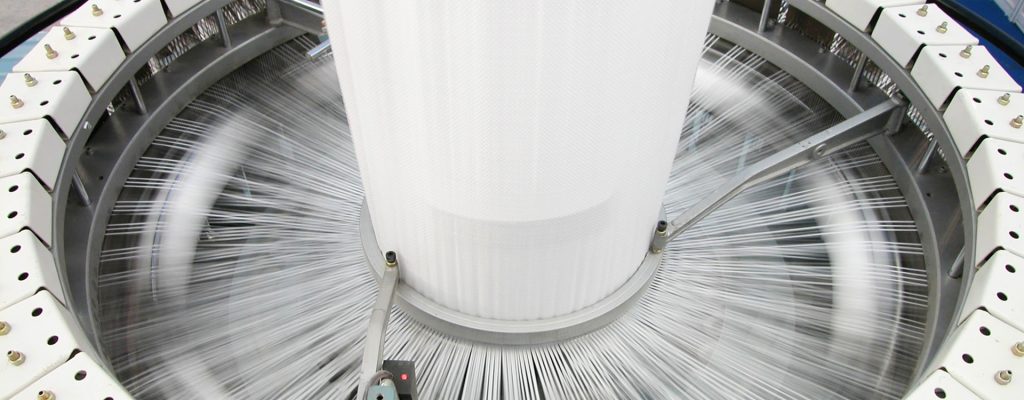
“Why are poly woven bags dominating retail and grocery packaging?”
Ray, CEO of VidePak, gestures emphatically during a recent industry summit. “The answer lies in three pillars: unmatched durability, brand customization potential, and sustainability. At VidePak, we’ve harnessed cutting-edge printing technologies and material innovations to make these bags indispensable for modern retailers.”
This bold statement captures the transformative role of poly woven bags in a sector where packaging is no longer just functional—it’s a branding tool and sustainability statement. With the global poly woven bag market projected to grow at a 4.8% CAGR through 2033, reaching $8.3 billion, retailers are prioritizing solutions that balance cost, aesthetics, and environmental responsibility.
1. Market Dynamics: The Rise of Poly Woven Bags
The retail and grocery sectors account for 35% of poly woven bag demand, driven by their lightweight yet robust structure, which reduces shipping costs by 20–30% compared to rigid packaging. Key drivers include:
- E-Commerce Boom: Cross-border e-commerce logistics require packaging that survives 5+ handling cycles. VidePak’s tear-resistant PP bags (≥18 kgf burst strength) reduce split incidents by 70%.
- Brand Differentiation: A 2025 Nielsen study found 68% of consumers associate high-quality packaging with brand credibility. Poly woven bags support vivid, high-resolution printing—VidePak’s Starlinger-powered presses achieve 1200 dpi clarity, enabling Pantone-matched branding.
- Regulatory Shifts: The EU’s 2024 Single-Use Plastics Directive incentivizes reusable solutions. VidePak’s recyclable PP bags comply with ISO 14064 and achieve 98% post-consumer recyclability.
2. Technological Excellence: Printing and Surface Customization
VidePak’s 30+ years of expertise and partnerships with Austrian Starlinger and German W&H enable unmatched customization:
2.1 Advanced Printing Techniques
Starlinger’s 8-color flexographic printers and W&H’s digital UV inkjet systems allow:
- Single to Multi-Color Printing: Ideal for budget-conscious SMEs or luxury brands requiring gradients and metallic finishes.
- Surface Effects: Matte finishes reduce glare on supermarket shelves, while glossy coatings enhance vibrancy for seasonal promotions.
Technical Specifications:
| Parameter | Starlinger Flexo | W&H Digital UV |
|---|---|---|
| Resolution | 600 dpi | 1200 dpi |
| Colors Supported | 8 | 12 |
| Print Speed | 200 bags/min | 150 bags/min |
| Finish Options | Glossy, Matte | Glossy, Matte, Texture |
A case study with a U.S. organic grocery chain showed a 40% sales increase for products in VidePak’s matte-finished, eco-printed bags, which emphasized natural branding.
2.2 Structural Adaptability
- Gusseted Designs: Expandable side panels accommodate irregularly shaped items like bulk cereals or apparel.
- Reinforced Handles: Ergonomically designed handles with anti-slip textures support 25 kg loads, reducing worker strain in warehouses.
3. Sustainability: Beyond Recyclability
VidePak’s EcoFlex line addresses circular economy demands:
- Material Efficiency: Ultra-thin 85gsm PP fabric (vs. industry-standard 100gsm) reduces raw material use by 15% without compromising tensile strength (≥55 N/cm²).
- Carbon-Neutral Production: Solar-powered facilities in Vietnam offset 10,000 tons of CO₂ annually, aligning with the Science-Based Targets initiative (SBTi).
- Closed-Loop Recycling: Partnering with TerraCycle, VidePak ensures 95% of returned bags are reprocessed into pelletized PP for new products.
4. VidePak’s Competitive Edge
With 526 employees and $80M annual revenue, VidePak combines scale with agility:
- Production Capacity: 100+ circular looms and 30+ lamination machines produce 15 million bags monthly, including custom sizes like 10L “grab-and-go” retail totes.
- Certifications: FSSC 22000 for food safety and BRCGS AA+ for retail compliance.
- Speed-to-Market: 10-day lead time for custom orders of up to 500,000 units, supported by in-house design teams and AI-driven prototyping tools.
FAQs: Addressing Retailers’ Top Concerns
Q: How do poly woven bags compare to reusable cotton totes?
A: PP bags are 50% lighter, 3x more tear-resistant, and 40% cheaper to produce. They also require 90% less water to manufacture than cotton.
Q: Can these bags withstand freezer temperatures?
A: Yes. VidePak’s cold-chain bags use ethylene-vinyl alcohol (EVOH) barriers, maintaining flexibility at -25°C and blocking condensation.
Q: Are customized prints cost-effective for small businesses?
A: VidePak’s modular pricing allows SMEs to order 5,000 units with 2-color prints at $0.12/bag—70% cheaper than traditional screen printing.
5. Future Trends: Smart Packaging and Beyond
VidePak’s 2026 roadmap includes:
- IoT Integration: QR codes linked to dynamic content (e.g., recipes, sustainability metrics) via custom-printed interactive bags.
- Bio-Based PP: 30% plant-derived resin trials show identical performance with a 25% lower carbon footprint.
- Anti-Microbial Coatings: Silver-ion liners reduce bacterial growth by 99.7%, extending produce shelf life by 5 days.
Conclusion
Poly woven bags are redefining retail packaging through durability, brand versatility, and eco-innovation. As Ray summarizes, “Our bags don’t just carry products—they carry brand stories and environmental commitments.” Retailers seeking competitive differentiation should explore solutions like high-definition retail-ready packaging and sustainably engineered designs to future-proof their supply chains.
This report integrates data from FMI’s Polywoven Bags Market Analysis (2023), industry whitepapers, and VidePak’s production metrics. For technical validation, refer to ISO 22434:2025 standards on packaging performance.